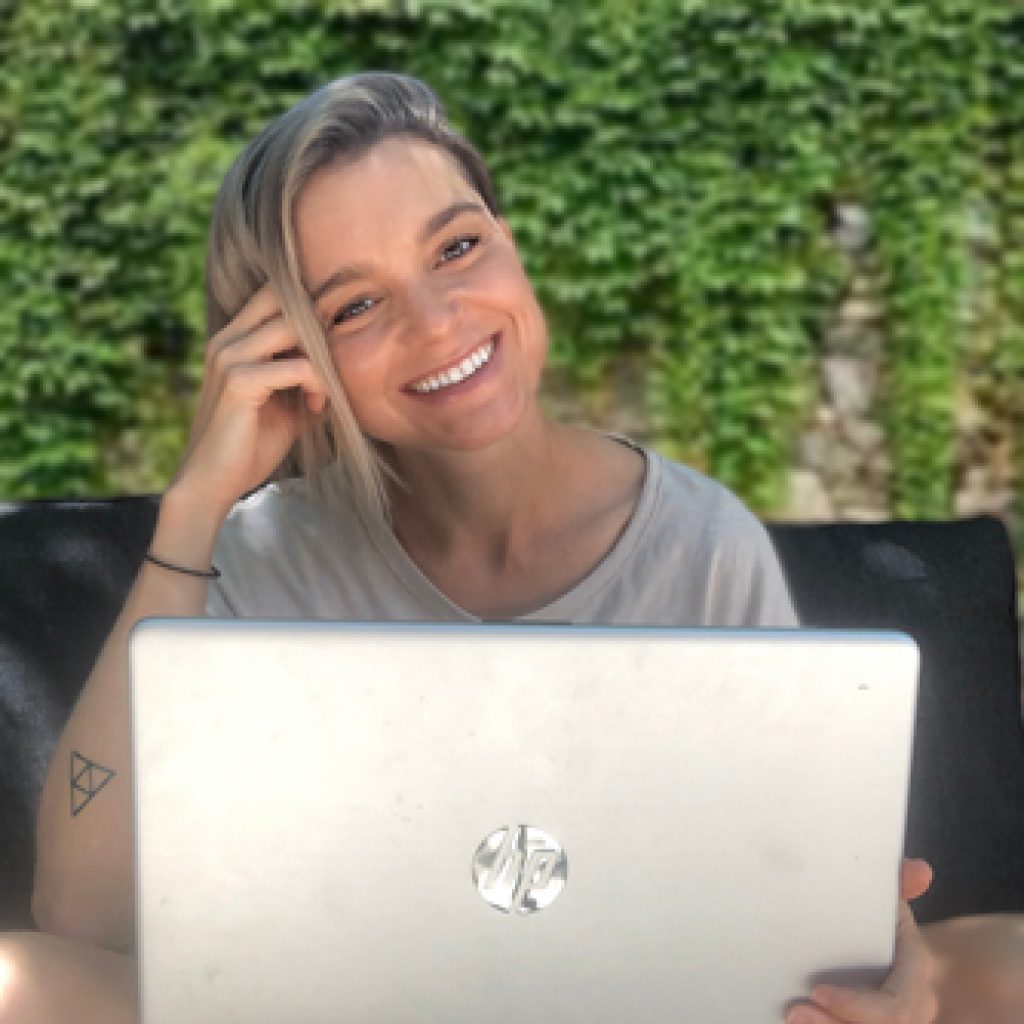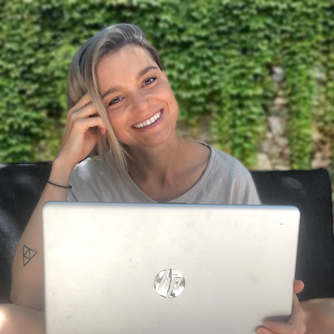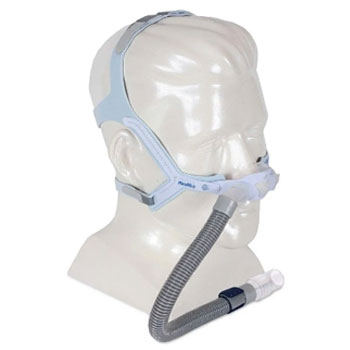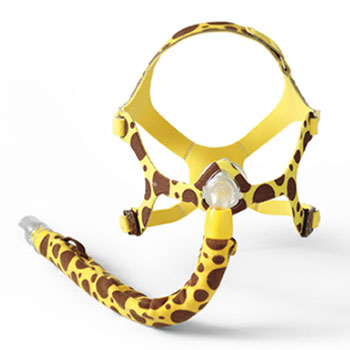Sleep apnea in children is less common1 than it is in adults, so children’s CPAP masks may be harder to come by.
For most children, it simply won’t work to buy an adult’s CPAP mask and size it down. Instead, you’ll want a CPAP mask that is uniquely designed for a younger person’s features. That’s why in today’s article, we’ll go over our two favorite CPAP masks, specifically designed for children.
We’ll also discuss pediatric sleep apnea more generally, tips on how to choose the right mask for your child, and perhaps most importantly, advice on how to get them to actually wear it.
If you suspect your child might have sleep apnea, talk to your pediatrician as soon as you can. Oftentimes pediatric sleep apnea is caused by enlarged tonsils or adenoids, which can be easily fixed with surgery.1 Otherwise, CPAP therapy will likely be recommended.1
Best CPAP Mask for Children
- ResMed Pixi Pediatric CPAP Mask – Editor’s Pick
- Philips Respironics Wisp Pediatric Nasal CPAP Mask – Most Comfortable CPAP Mask for Children
ResMed Pixi Pediatric CPAP Mask – Editor’s Pick
ResMed Pixi Pediatric CPAP Mask
A nasal mask with adjustable tubing and unobtrusive headgear, making it a good option for kids.
Why the ResMed Pixi Earned Editor’s Pick
The ResMed Pixi Pediatric CPAP mask is a lightweight, soft mask designed for children between the ages of two and seven who have been diagnosed with sleep apnea.
This is a nasal mask, which means it will only cover your child’s nose area, leaving a full and clear field of vision. Parents or caregivers can easily adjust it. This product also comes with a quick-release latch, so that parents can easily remove the mask and put it back on as needed during the night.
Since children may be more sensitive to hard or scratchy materials, this mask’s headgear is made with ResMed’s softest Breathe-o-PreneTM material. Children may also move around more at night, so the lightweight tube on this mask is designed to adjust according to your child’s preferred sleep position.
Our Take: From the softer and more flexible materials to the quick-release latch, this mask is designed with children’s unique sleep needs in mind.
What We Liked
- Adjustable tubing – You can attach the tubing to either the left or right side, according to your child’s preferred sleeping position.
- Flexible tubing – Not only can you attach the tubing to whichever side works best, but the tubing itself is flexible and lightweight to accommodate active sleepers.
- Unobtrusive, adjustable headgear – The headgear is soft and designed just for children. Plus, you can adjust it to accommodate your child as they grow.
- Thin, soft cushion – The mask cushion is softer than that of an adult mask but still creates a solid seal so air shouldn’t leak.
- No small parts – This mask doesn’t come with any loose or small parts, so you won’t have to worry about any choking hazards for young children.
Potential Drawbacks
- Won’t work with congestion – If your child has congestion, a deviated septum, or any other condition that causes consistent nasal blockage, they’ll need an oral or full-face mask rather than a nasal mask.
- Could leave red marks – Some users report some slight red marks on the face with this mask. However, if this is the case for you, it’s likely a sign the mask is on too tight. Try loosening it slightly and see if that helps.
Philips Respironics Wisp Pediatric Nasal CPAP Mask – Most Comfortable CPAP Mask for Children
Philips Respironics Wisp Pediatric Nasal CPAP Mask
A mask featuring adjustable straps, correction dial, and a cushioned design. Great for children.
Why the Philips Respironics Wisp Earned Most Comfortable CPAP Mask for Children
The Wisp Pediatric nasal CPAP mask takes all of the benefits of the original Wisp mask made for adults and adds features like softer straps, easier adjustment, and more freedom of movement — all of which make this mask ideal for children.
We chose it as our most comfortable pick, specifically because it makes minimal contact with the face while still delivering a secure seal so air shouldn’t leak. The tubing can also rotate up to 360 degrees, allowing your child to move comfortably throughout the night. Plus, parents can easily correct any leaks with the unique Leak Correction Dial without removing the mask or waking the child.
Our Take: Getting your child to consistently use their CPAP might be difficult, but this mask should make it easier. It’s not only fun with its cute giraffe print, but it’s also soft, flexible, and comfortable.
What We Liked
- Leak correction dial – This dial allows caregivers to easily adjust the mask without removing it or waking your child, should it start to leak during the night.
- 360-degree rotating elbow – This allows your child to move freely while they sleep. It is also designed to quickly release, should your child need to get up in the middle of the night.
- Cushioned design – This mask makes minimal contact with the face, but where it does, it should feel soft and gel-like.
- Easily adjustable straps – The headgear features “click-fit” clips and adjustable straps, so you can easily adjust, remove, and put it on.
- Giraffe print – It might seem like a small detail, but the animal print may help turn this mask into something fun your child gets to wear.
Potential Drawbacks
- Won’t work for mouth-breathers – Since the Wisp Pediatric is a nasal mask, it will only deliver air pressure via the nose. This means if your child tends to breathe through their mouth during the night, this CPAP mask won’t deliver them the air pressure they need.
- More expensive – The price of this mask varies depending on whether or not you’re using insurance and where you’re purchasing it from, but in general, it tends to cost a bit more than some other CPAP masks.
- Uses magnets – This mask uses magnets in its construction. This should be fine for most wearers, but for those with certain medical implants or devices, masks with magnets should be avoided2.
What Is a CPAP Mask for Children?
A CPAP mask for children is a CPAP mask designed specifically for a child’s unique facial features, proportions, and sleep needs. It connects to a CPAP machine3, a device that delivers continuous air pressure throughout the night. This device helps keep the airways open and oxygen levels stable for those with sleep apnea.3
Even though pediatric sleep apnea is less common than adult sleep apnea, it does affect at least 2 or 3 percent of children.1
View our guide: 3 Best CPAP Machines for 2024
What to Look for in a CPAP Mask for Children
Size and Fit
Children have uniquely small noses4, mouths, eyes, and larger cheeks, foreheads, and heads (proportionally) compared to adults. This is why simply buying an adult mask and adjusting it down in size simply won’t work for most children.
The mask should fit comfortably, while still creating a firm seal around your child’s nose (or nose and mouth) to ensure no air leaks, even when they change positions. Likewise, the headgear should feel snug but not uncomfortable.
Some pediatric CPAP masks come in one size with a recommended age range. Others, however, are available in different cushion sizes (usually Small, Medium, and Large.) These masks should come with a size guide to help parents choose the right size for their child.
Comfort
If you have children, you know that they’re unlikely to wear anything that feels scratchy, hard, or otherwise uncomfortable. This is especially true of a CPAP mask, which is worn overnight.
Look for a children’s CPAP mask that is designed with softer straps, has flexible tubing and headgear, features soft mask cushions with minimal contact, and allows for a clear field of vision. This should help them stay CPAP compliant5, which is important for both their health and the continuation of insurance coverage for CPAP treatment.
Compatibility
Before you purchase a CPAP mask and tubing for your child, you’ll want to make sure they are compatible with their specific CPAP machine. The CPAP machines themselves are made for all ages, and there aren’t models made specifically for children, but most should be compatible. If you’re unsure, check directly with the manufacturer.
You also need to make sure that the type of mask you select is compatible with your child’s preferred sleep position. The two masks we mentioned above are great examples since they both include tubing that can either attach to the left or right side of the face or be rotated to accommodate multiple sleep positions.
Doctor’s Recommendation
In order to buy a CPAP machine, mask, or other supplies, you’ll need a doctor’s prescription. If you think your child has sleep apnea, the first step is to schedule an appointment with your pediatrician to discuss symptoms.
The doctor can then recommend your child for a sleep study6, which measures brain waves, heart rate, and breathing during sleep. If your child does have sleep apnea, your doctor may prescribe CPAP therapy or recommend a different treatment altogether.
If the doctor does prescribe CPAP therapy, a sleep specialist can assist you in finding the best mask type and fit for your child’s unique face, sleep position, and air pressure needs.
Materials
Generally, you’ll want to look for mask materials that are soft and headgear that is padded. Most masks are made from silicone, gel padding, or fabrics. These feel cushiony and are typically safe, though some people may develop a rash in response to silicone.
If your child is allergic to latex, avoid masks with latex. Also, if you or your child have any metallic medical devices or implants, avoid masks that use magnets.2
Care
All CPAP masks and equipment need regular care and cleaning. Your child’s CPAP mask will likely come with specific cleaning instructions, but in general, it is recommended7 that you clean the mask’s cushion or nasal pillow daily, and the tubing and headgear weekly. Using a mixture of pure liquid soap and water should work just fine, but avoid cleaning with antibacterial soaps, bleach, alcohol, oils, abrasives, or other harsh or scented soaps.8
You should also know that certain components of the CPAP mask and machine will need to regularly be replaced. For example, masks and tubing should be replaced about every three months8.
Budget
The price of your child’s CPAP mask will vary depending on whether or not you’re using insurance to help cover the costs, as well as which retailer you’re buying from. For example, online retailers tend to offer lower prices and greater discounts than some sleep specialists or medical supply stores. We advise confirming with your insurance company what’s provided so that you aren’t hit with any surprise bills.
Warranty
Oftentimes, CPAP masks come with a warranty, which will allow for either repair or replacement should your mask be defective. The CPAP machine and mask’s warranties will depend on both the manufacturer and the supplier.
What Is Pediatric Sleep Apnea?
Pediatric sleep apnea is a sleep disorder that affects at least 2 to 3 percent of children and teens.1 Sleep apnea can be divided into two types9 obstructive and central.
Obstructive sleep apnea means that because of an obstruction, the airway narrows so much during sleep that it is difficult for air to pass through.10 Central sleep apnea is caused by a miscommunication between the brain and the muscles that control breathing.9
Both types result in continuous pauses in breathing, resulting in irregular levels of oxygen and waking up throughout the night.9 If left untreated, sleep apnea can lead to serious health complications like type 2 diabetes, heart issues, high blood pressure, and more.9
Most people (including children) who have sleep apnea have obstructive sleep apnea, or OSA. In children, one of the leading causes of OSA is enlarged tonsils or adenoids, though another major cause of pediatric sleep apnea is childhood obesity.1 Your child is also more likely to have sleep apnea if they have Down syndrome, cerebral palsy, or another condition that causes low airway tone.1
Some common symptoms of pediatric sleep apnea include1:
- Snoring, often with pauses in breathing, gasps, or snorting
- Heavy breathing while sleeping
- Bedwetting
- Daytime sleepiness or behavioral issues
- Restless sleep or insomnia
If you think your child has sleep apnea and hasn’t yet been diagnosed, speak to their pediatrician about their symptoms.
Learn more: Sleep Apnea Facts
Tips to Get Your Child to Wear a CPAP Mask
Your child will likely have some initial resistance to wearing their CPAP mask or keeping it on through the night. That’s why we’ve gathered the following tips from medical professionals10 that should help both you and your child while they’re adjusting to the CPAP mask.
- Practice during the day – Experts recommend practicing during the day, while your child is in a good mood and distracted by something calming like a movie or show.
- Provide positive feedback – Give your child lots of positive feedback and allow them to touch the CPAP mask and hold it to their face.
- Decorate the CPAP machine – Decorating your child’s CPAP machine could make the experience more fun for them. If you can switch it from something they have to do or dread into something fun that they get to do, they’ll be more likely to use it. However, you should not decorate the mask itself.
- Place it on a favorite stuffed animal. You can show your child that wearing a CPAP mask is safe by placing it on a stuffed animal or yourself.
- Allow them to get used to the noise. You can leave the CPAP machine running during the day for short periods of time so your child can get used to the noise.
When placing the mask on your child…
- Place it on them from the front – It is best to put the mask on from the front, and not from the back. While you’re doing this, you can make eye contact with your child and tell them what you’re doing with the mask.
- Start slowly – You should start by placing the mask on them without turning on the machine. Calmly remind them to breathe in and out for just five to 10 seconds at a time. As they get more comfortable, increase the time.
- Reward good behavior – As your child keeps the mask on, be sure to provide lots of positive reinforcement and a rewarding activity.
- Introduce the machine – Once your child is comfortable wearing their mask without the machine, you can then turn on the machine so they can start to get used to breathing with air pressure. Once they get used to this, it will be time to start putting them to bed with their CPAP.1
Even once your child has gotten used to the CPAP mask and wears it to bed, experts recommend continuing to acknowledge this accomplishment.11 If your child is old enough to clean the machine and equipment themselves, you can reward these behaviors as well.
Frequently Asked Questions
Can CPAP be used on children?
Yes, CPAP devices can be used on children. If your child has been diagnosed with sleep apnea, their doctor may recommend CPAP therapy. This will depend on the underlying cause of their sleep apnea, its severity, and whether or not other treatment options or lifestyle changes will work.
How do I get my child to wear a CPAP mask?
Getting your child to wear their CPAP mask might be a slow process. Medical experts recommend easing them into it.10
Let them get used to wearing the mask during the day without turning on the machine. As they get more comfortable, increase the time. Once they feel safe wearing the mask during the day, try connecting it to the machine, gradually increasing the time with it on as they get more comfortable.
As they get used to breathing with the machine, you can have them start using the CPAP at night. Make this a part of your bedtime routine, and remember to keep giving them positive reinforcement.
How is sleep apnea treated in children?
Children have several treatment options when it comes to sleep apnea, depending on what causes it and the severity of it.
Sleep apnea in children is often caused by enlarged tonsils or adenoids, and if this is the case for your child, a tonsillectomy or adenoidectomy will be their likely course of treatment.1
If their sleep apnea is caused by obesity, their doctor might recommend they lose weight. They may even suggest CPAP therapy in the meantime.
Other causes of sleep apnea in children include congestion, a deviated septum, certain sedating medications, low airway tone, and even back sleeping.1, 9 If any of these are the cause of your child’s sleep apnea, your pediatrician will likely recommend treating these underlying issues before starting CPAP therapy.

Natalie Grigson
Writer
About Author
Natalie is a content writer for Sleep Advisor with a deep passion for all things health and a fascination with the mysterious activity that is sleep. Outside of writing about sleep, she is a bestselling author, improviser, and creative writing teacher based out of Austin.
Combination Sleeper
- 1. “Pediatric Obstructive Sleep Apnea”. Yale Medicine. Webpage accessed December 5, 2024. –
- 2. “Philips Respironics alerts customers worldwide of updated instructions and labeling of specific sleep therapy masks that contain magnetic headgear clips due to potential risk of serious injury”. PHILIPS. 2022. –
- 3. “CPAP Machine”. Cleveland Clinic. Last modified November 9, 2021. –
- 4. Faghel-Soubeyrand, Simon., et. al. “Diagnostic Features for Human Categorisation of Adult and Child Faces”. Frontiers in Psychology. 2021. –
- 5. “Compliance & Adherence”. Upstate Medical University. Webpage accessed December 5, 2024. –
- 6. “Polysomnography (sleep study)”. Mayo Clinic. Last modified February 17, 2024. –
- 7. “CPAP Equipment Cleaning and Disinfecting Instructions”. Weill Cornell Medicine. Webpage accessed December 5, 2024. –
- 8. “REPLACEMENT SCHEDULES FOR MEDICARE CONTINUOUS POSITIVE AIRWAY PRESSURE SUPPLIES”. Department of Health and Human Services. 2013. –
- 9. “Sleep Apnea”. Mayo Clinic. Last modified April 6, 2024. –
- 10. “Tips for getting your child to wear CPAP/BIPAP”. UW Health. Webpage accessed December 5, 2024. –


